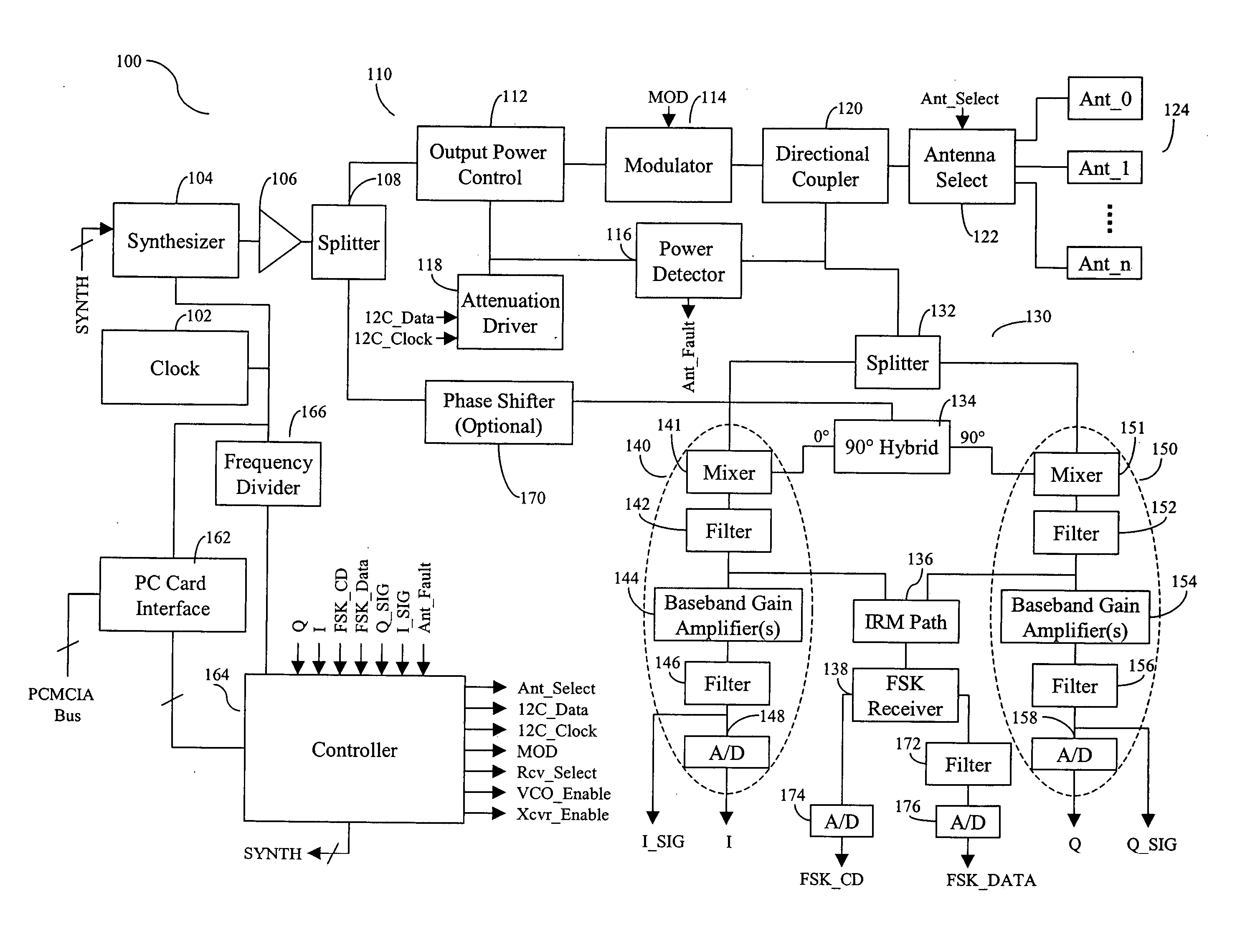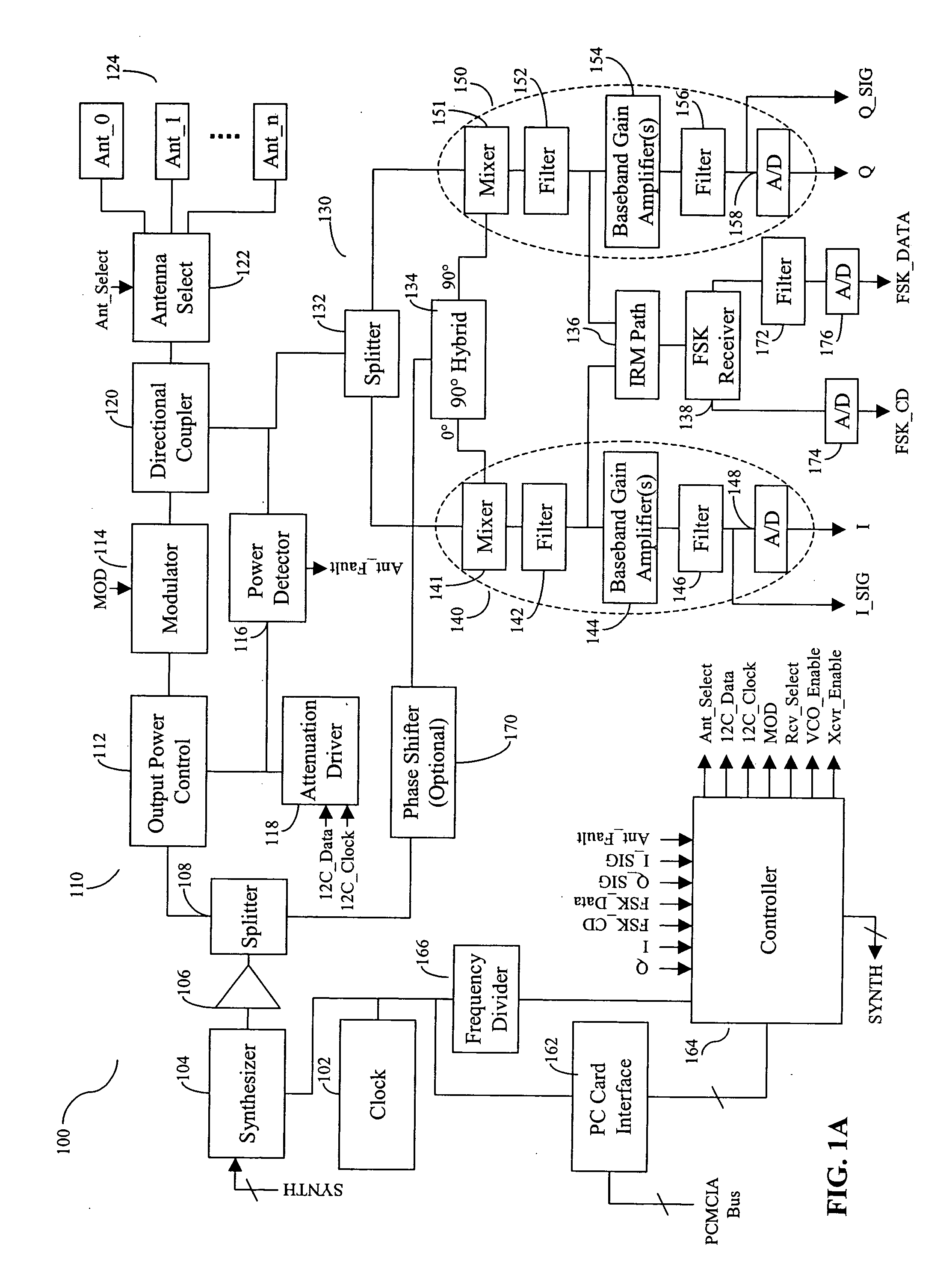Multiprotocol RFID reader
a radiofrequency identification and transponder technology, applied in the field of interrogation of radiofrequency identification transponders, can solve the problems of increasing the physical size and weight of the reader, unsatisfactory, and the rfid system presenting challenges for conventional rfid readers, and achieves low cost, high sensitivity, and small size
- Summary
- Abstract
- Description
- Claims
- Application Information
AI Technical Summary
Benefits of technology
Problems solved by technology
Method used
Image
Examples
Embodiment Construction
[0051]FIG. 1A is a block diagram of an RFID reader 100 according to one embodiment of the present invention. As shown in FIG. 1A, reader 100 includes a crystal oscillator 102 configured to generate a clock signal, and a frequency synthesizer 104 configured to generate a continuous wave (CW) signal referencing the clock signal. Reader 100 further includes a local oscillator (LO) buffer amplifier 106 coupled to synthesizer 104 and configured to amplify the CW signal. LO buffer amplifier 106 also protects the synthesizer from disturbances created from other parts of reader 100. LO buffer amplifier 106 may be implemented using conventional means.
[0052] Reader 100 further includes a transmit (TX) chain 110 configured to form and transmit a transmit (TX) signal for interrogating a tag, and a receive (RX) chain 130 configured to receive an RF signal from the tag, and to generate a plurality of output signals from the RF signal. TX chain 110 includes an output power control module 112, a m...
PUM
 Login to View More
Login to View More Abstract
Description
Claims
Application Information
 Login to View More
Login to View More - R&D
- Intellectual Property
- Life Sciences
- Materials
- Tech Scout
- Unparalleled Data Quality
- Higher Quality Content
- 60% Fewer Hallucinations
Browse by: Latest US Patents, China's latest patents, Technical Efficacy Thesaurus, Application Domain, Technology Topic, Popular Technical Reports.
© 2025 PatSnap. All rights reserved.Legal|Privacy policy|Modern Slavery Act Transparency Statement|Sitemap|About US| Contact US: help@patsnap.com



